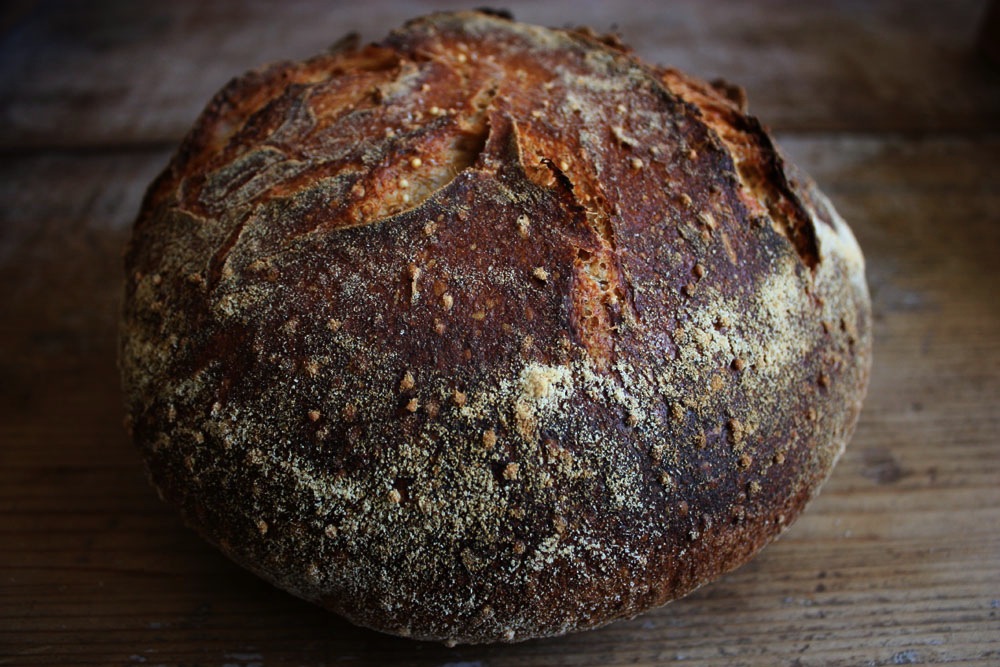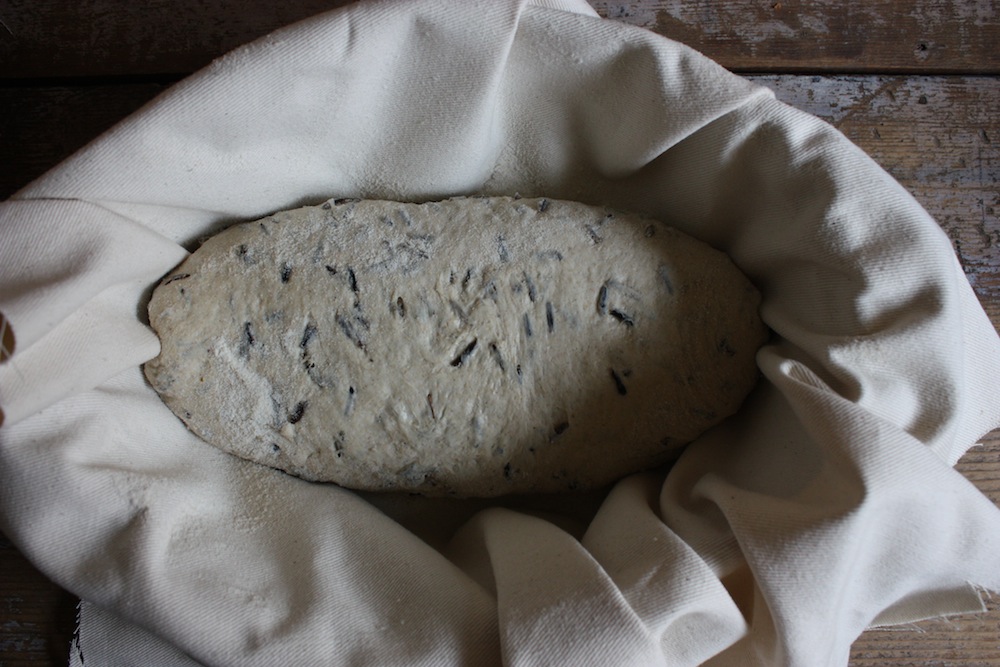I LOVE LOVE LOVE David Lebovitz. I do. We share stomping grounds/passions. First, we are both from the Bay. He cooked at Chez, I was at Oliveto. Then he took off to Paris, as did I. Difference is, he never came back, I did. Oi. What was I thinking? There is still hope, however. If I am not mistaken, he left for Paris when he was 47 (?) which still gives me some time to wrap up a few things before I hit the road. For now, I will live vicariously through him. Which is a pleasure, not only because he writes about my favorite city, but he writes about it so well.
I am actually reading his current cookbook as a novel (thank you Sandra C., for giving it to me for my birthday!). It's not just a great book of recipes and tales, but David has a way of really connecting with his readers. He's humorously self-deprecating, and he makes us feel like we should be linking arms and laughing our way along the Seine, saying: 'Ces drôles Française!' (et, oui, je parle Français. C'est vrais, hier soir je rêvais en Français!).
Speaking of making merry with friends, I had this little dinner party last night, having bookmarked several pages from David's book the week prior. I could not decide which salad to make, such a complication! So I did my own thing. I did, however, have the faculty to decide on these lovely-looking black olive/almond crisps, and man, oh, man! did they came out smashingly.
So much, in fact, that I thought up a whole nother version of them. My version has raisins, flax seeds and hazelnuts, and I ground my own spelt (David uses whole wheat). Divine, these. I served both varieties with this lovely roasted red pepper feta thing que je fais pour mes petites soirées, and they were a hit. I think that these are going to be my go-to crisps for the holiday season. They whip up in a hot second (no sourdough here, just a heads up; the loaf calls for baking soda) with zero fuss, and you are likely to have all of the ingredients for both versions loitering about.
Thank you D.L., for continuing to bring me Paris, making me proud to be a Bay Area girl, and for sharing many lovely things to carry me through the upcoming season. Et oui alors, onward à la recette.
xo

.
I am starting with the recipe for David's crisps, but I encourage you to get your own copy of his book from Amazon, because it really is incredible. If you have not already, you should also visit his blog. The only adaptation I made was that I added some lemon zest to the batter, and I used fresh thyme instead of dried, as David suggests. My version, a sweet one, is just below.
70g all-purpose flour (I used Giusto's Artisan flour)
70g whole wheat flour (I used Community Grains hard red winter wheat)
1 TB granulated sugar (I used Trader Joe's organic cane sugar)
1 tsp fresh thyme
Zest of one lemon
1/2 tsp kosher salt (I used Diamond)
1/2 tsp baking soda
1/2 tsp freshly ground black pepper (I employed a coarsish grind)
250 ml buttermilk
45g untoasted almonds (they will toast up once you slice the loaf into crackers and give it a second bake)
60g coarsely chopped and pitted black olives (I used oil cured)
Preheat the ov to 350. Slick a 9" loaf pan with olive oil, and line it with parchment for easy removal of the loaf after baking.
In a bowl, mix together the flour, salt, soda, pepper, zest and herbs, then stir the buttermilk into this, now the almonds and olives. Using a spatula, get the batter into the awaiting pan and bake till a cake tester shoved into the center of the thing comes out clean. Mine took longer than the 30 minutes that David suggests. It will be a little golden, but don't let it get too dark. You are going to slice and bake the crisps in a moment.
Remove the loaf from the oven and cool in the pan for about 5 minutes. Unearth the loaf from the pan and cool on a wire rack for about 20 minutes.
Decrease the ov to 325. Line a baking sheet with silpat or parchment. Set aside.
After the loaf has cooled some, slice it into 1/4-inch slices and lay in a single layer over the baking sheet. Bake the slices, watching them carefully, until they turn golden brown. You will have to flip the slices (the bottoms brown quicker than the tops) and rotate the pan during the bake for even browning.
Remove from the ov and cool before serving. Well, this is what David says. We ate some warm, some cool. You know. Evidently they can be stored for a week in an airtight container, but we had no need for storage. These crisps were gone in a flash.
Follow the directions as above, mixing the dry ingredients, then stirring in the buttermilk, and finally, folding in the nuts, flax and raisins. I served these crackers with a lovely roasted red bell pepper feta dip.
Thank you David for the continued inspiration. You are a gem and a doll and we all love you so!
xo
I am actually reading his current cookbook as a novel (thank you Sandra C., for giving it to me for my birthday!). It's not just a great book of recipes and tales, but David has a way of really connecting with his readers. He's humorously self-deprecating, and he makes us feel like we should be linking arms and laughing our way along the Seine, saying: 'Ces drôles Française!' (et, oui, je parle Français. C'est vrais, hier soir je rêvais en Français!).
Speaking of making merry with friends, I had this little dinner party last night, having bookmarked several pages from David's book the week prior. I could not decide which salad to make, such a complication! So I did my own thing. I did, however, have the faculty to decide on these lovely-looking black olive/almond crisps, and man, oh, man! did they came out smashingly.
David Lebovitz's Salted Olive Crisps
Thank you D.L., for continuing to bring me Paris, making me proud to be a Bay Area girl, and for sharing many lovely things to carry me through the upcoming season. Et oui alors, onward à la recette.
xo

.
I am starting with the recipe for David's crisps, but I encourage you to get your own copy of his book from Amazon, because it really is incredible. If you have not already, you should also visit his blog. The only adaptation I made was that I added some lemon zest to the batter, and I used fresh thyme instead of dried, as David suggests. My version, a sweet one, is just below.
70g all-purpose flour (I used Giusto's Artisan flour)
70g whole wheat flour (I used Community Grains hard red winter wheat)
1 TB granulated sugar (I used Trader Joe's organic cane sugar)
1 tsp fresh thyme
Zest of one lemon
1/2 tsp kosher salt (I used Diamond)
1/2 tsp baking soda
1/2 tsp freshly ground black pepper (I employed a coarsish grind)
250 ml buttermilk
45g untoasted almonds (they will toast up once you slice the loaf into crackers and give it a second bake)
60g coarsely chopped and pitted black olives (I used oil cured)
Preheat the ov to 350. Slick a 9" loaf pan with olive oil, and line it with parchment for easy removal of the loaf after baking.
In a bowl, mix together the flour, salt, soda, pepper, zest and herbs, then stir the buttermilk into this, now the almonds and olives. Using a spatula, get the batter into the awaiting pan and bake till a cake tester shoved into the center of the thing comes out clean. Mine took longer than the 30 minutes that David suggests. It will be a little golden, but don't let it get too dark. You are going to slice and bake the crisps in a moment.
Remove the loaf from the oven and cool in the pan for about 5 minutes. Unearth the loaf from the pan and cool on a wire rack for about 20 minutes.
Decrease the ov to 325. Line a baking sheet with silpat or parchment. Set aside.
After the loaf has cooled some, slice it into 1/4-inch slices and lay in a single layer over the baking sheet. Bake the slices, watching them carefully, until they turn golden brown. You will have to flip the slices (the bottoms brown quicker than the tops) and rotate the pan during the bake for even browning.
Remove from the ov and cool before serving. Well, this is what David says. We ate some warm, some cool. You know. Evidently they can be stored for a week in an airtight container, but we had no need for storage. These crisps were gone in a flash.
Spelt Crisps w/Hazelnuts, Flax, and Sultanas
(adapted from David Lebovitz's Salted Olive Crisps from his book My Paris Kitchen)
70g all-purpose flour (I used Giusto's Artisan flour)
70g freshly milled spelt flour
1 TB granulated sugar (I used Trader Joe's organic cane sugar)
Zest of one lemon
1/2 tsp kosher salt (I used Diamond)
1/2 tsp baking soda
250 ml buttermilk
45g untoasted hazelnuts (they will toast up once you slice the loaf into crackers and give it a second bake)
30g flax seeds
30g flax seeds
60g sultanas that have been soaked in hot water for about 30 minutes, then squeezed dry
Follow the directions as above, mixing the dry ingredients, then stirring in the buttermilk, and finally, folding in the nuts, flax and raisins. I served these crackers with a lovely roasted red bell pepper feta dip.
Red Pepper Feta Dip
xo
To the staff of life!

































































